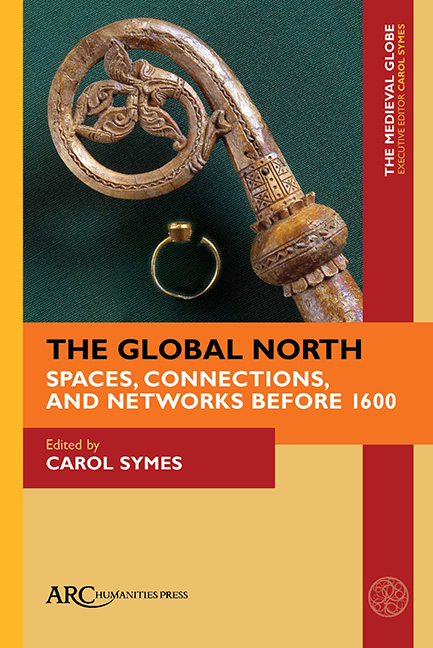Book contents
- Frontmatter
- Contents
- List Of Illustrations
- Introduction: Exploring the Global North, from the Iron Age to the Age of Sail
- Contesting Marginality: The Boreal Forest of Middle Scandinavia and the Worlds Outside
- Archaeological Evidence for Staraya Lagoda as an Early Scandinavian Emporium of the Global North
- Gunhild’s Cross and the North Atlantic Trade Sphere
- The Far North in the Eyes of Adam of Bremen and the Anonymous Author of the Historia Norwegie
- The Multi-Layered Spatiality of the Global North: Spatial References and Spatial Constructions in Medieval East Norse Literature
- Military Migration in the Baltic Sea Region, ca. 1400–1620
- Old and New Land in the North and West: The North Atlantic on the Medieval Globe around 1500
- Index
The Far North in the Eyes of Adam of Bremen and the Anonymous Author of the Historia Norwegie
Published online by Cambridge University Press: 20 January 2022
- Frontmatter
- Contents
- List Of Illustrations
- Introduction: Exploring the Global North, from the Iron Age to the Age of Sail
- Contesting Marginality: The Boreal Forest of Middle Scandinavia and the Worlds Outside
- Archaeological Evidence for Staraya Lagoda as an Early Scandinavian Emporium of the Global North
- Gunhild’s Cross and the North Atlantic Trade Sphere
- The Far North in the Eyes of Adam of Bremen and the Anonymous Author of the Historia Norwegie
- The Multi-Layered Spatiality of the Global North: Spatial References and Spatial Constructions in Medieval East Norse Literature
- Military Migration in the Baltic Sea Region, ca. 1400–1620
- Old and New Land in the North and West: The North Atlantic on the Medieval Globe around 1500
- Index
Summary
IN THE TWELFTH to fourteenth centuries, a genre of specialized geographical literature began to emerge in Scandinavia: a series of descriptions of the inhabited world, or its parts, based on a continental European chorographic tradition—pri-marily the Etymologiae by Isidorus of Seville and Honorius of Autun's encyclopaedia Imago mundi—but also on local knowledge of the topography of northern and eastern Europe. Alongside these Old Norse writings, geographical descriptions also occur in Old Norse chronicles and sagas. Studying the geographical descriptions in twelfth-cen-tury Scandinavian Latin texts, Lars Boje Mortensen concludes that the medieval geo-graphical imagination had been based on older textual predecessors, rather than on personal acquaintance with the territories in question. Indeed, the influence of ancient authors predominated even in the descriptions of lands that had not been familiar to them, as manifested in the structure and presentation of geographical and ethnographic material in these later works. Northern geography was thus subsumed into the learned discourse. At the same time, Mortensen rightly emphasizes that, by the twelfth century, the geography of northern territories was well known in practice, so that the need arose “to explain the region in writing,” mainly in Latin, within the framework of the centuries-old Latin written culture, because the historians who sought to chronicle the northern periphery of Europe aimed at including their region into the common Christian space, and could not do so without the basis of written geography.
The twelfth-century northern scholars who were the first to write in Latin were the anonymous author of the Historia Norwegie (History of Norway); a Norwegian known as Theodoricus the Monk, author of the Historia de antiquitate regum Norwagiensium (The Ancient History of the Norwegian Kings); a Dane, Saxo Grammaticus, the author of the Gesta Danorum (Deeds of the Danes); Ælnoth, an Anglo-Saxon monk who, as a Danish transplant, authored the Gesta Swenomagni regis et filiorum eius (Deeds of Sweyn the Great and His Sons); and the Norwegian author of the introduction to Passio Olaui (Passion of Saint Olaf, that is, Olaf II Haraldson, king of Norway from 1015 to 1028). All of them faced the task of creating a textual map of the northern regions, and all had to rely on ancient texts even though ancient authors either did not know anything about the North, or were not at all interested in it.
- Type
- Chapter
- Information
- The Global NorthSpaces, Connections, and Networks before 1600, pp. 77 - 90Publisher: Amsterdam University PressPrint publication year: 2021

